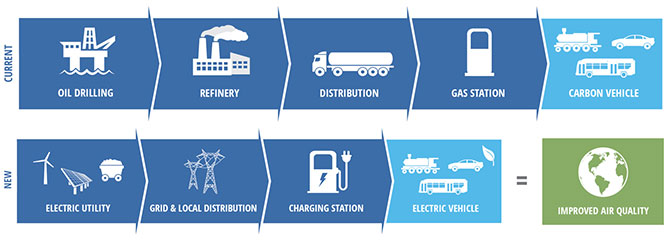Mass transit contributes to a more sustainable environment by getting cars off the roads, however, the transit industry is taking sustainability to the next level by converting bus fleets to battery electric buses. In many ways, transit authorities are
leaders in advocating and implementing sustainable practices and help set the curve for more widespread adaptation of the latest technologies.
It All Starts With a Conversation
One example of such leadership is the American Public Transportation Association’s (APTA’s) Battery Electric Bus Subcommittee, which had its first gathering at the APTA Sustainability and Multimodal Planning Workshop in Boston, Massachusetts,
in late July. I had the pleasure of joining the conversation as transit agency representatives discussed their experiences with deploying battery electric buses—including a dialogue on the role of electric utilities in supplying power. Working
through some of the issues transit agencies encounter, on topics including grid capacity, life cycle costs, and charging methods, we are able to reach solutions through shared experiences and past successes.
Here are five important considerations for transit authorities and policy makers with regard to the electrification of bus fleets:
1. Standardization of key components must be considered.
2. Larger electric bus fleets will require significant utility-supplied electrical load.
3. Electricity rate structure (possibly special rates) needs to be considered in agencies’ economic analysis.
4. An orderly transformation from a petroleum supply chain to an electric supply chain requires long-term planning.
5. Our Transportation Trust Fund is funded with the petroleum-based supply chain. This established process will need to be rethought as we go from petroleum-based to electric-based fleets.

I also had the opportunity to moderate a panel at the APTA Sustainability and Multimodal Planning Workshop titled “Connecting to the Grid: What’s Ahead for Our Fleets and Infrastructure?” where industry leaders explored transit electrification
and the resulting power demand, demand management, and grid integration opportunities. I’d like to give a shout out to my panelists: Adam Zellner from Greener by Design, Mark Smith from the U.S. Department of Energy Vehicle Technologies Office,
Rick Mroz from Resolute Strategies, and Phil Jones from the Alliance for Transportation Electrification.

Transitioning to electric vehicle infrastructure: With the goal of improved air quality through a reduction in transportation-related carbon emissions, the supply chain transformation from petroleum-based to electric fleets requires long-term planning.
Putting Innovation to Work
At Dewberry, we’re excited to be not only part of the conversation, but to be pairing with transit authorities and car makers to advance electrification of their vehicles to ultimately lead to a more sustainable planet. We’re working with
New Jersey Transit to plan and design an electric vehicle charger pilot program that is being implemented in part by the Federal Transportation Administration Low or No Emission Vehicle Program – 5339(c).
Our work extends to charging for electric passenger cars. We plan, design, and provide construction oversight for fast-charging stations in many U.S. locations. These projects share considerations with battery electric buses, including how to strategically
place chargers given range limitations, access to resilient power supply, and parking logistics and space constraints.
What are your thoughts and experiences about the electrification of vehicles? What do you foresee being some of the challenges and solutions regarding electric vehicles? Join our conversation in the comment section of our LinkedIn post.